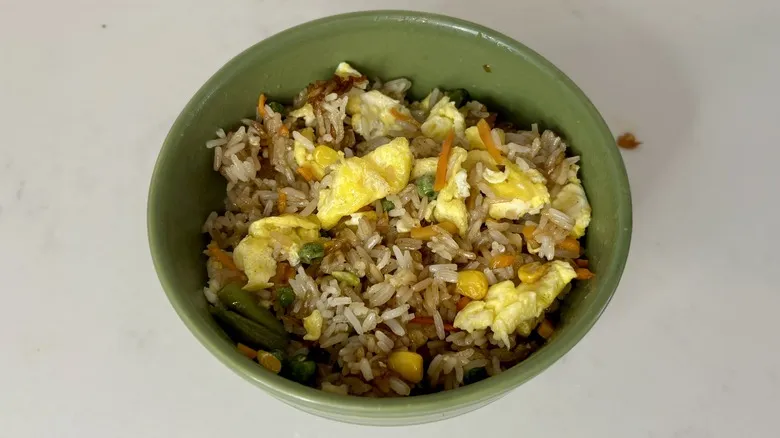The secret ingredient
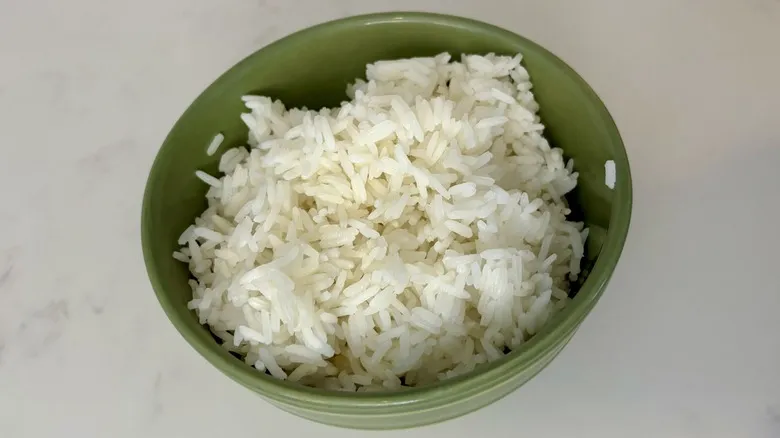
There’s one essential tip for creating top-notch fried rice: always use leftover rice. If you remember nothing else from this article, remember this: fresh rice, while soft and tasty, doesn’t fry well. Leftover rice has had the chance to dry out just enough, allowing the exterior to become crispy while keeping the interior tender. If you have some leftover white rice from takeout, this is the perfect opportunity to use it. Instead of discarding the extra rice, save it and transform it into your next dish.
Now, if you’re craving fried rice but don’t have any leftovers, there’s a trick you can use. Spread your fresh, fluffy rice in a thin layer on a baking sheet, breaking up any large clumps. Let it sit at room temperature for about 10 minutes to cool, then place it in the fridge for around 30 minutes. This process will help draw out some moisture and give the rice a bit more structure.
How to fake it if you don't have day-old rice
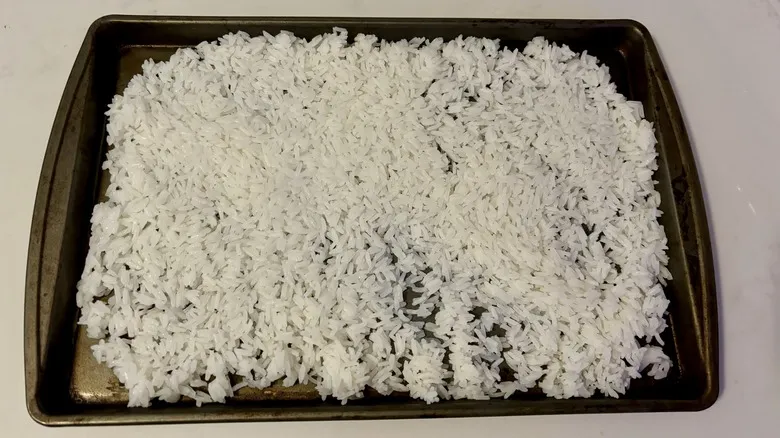
If you're craving fried rice but don't have any leftover rice, there's a trick you can use. Spread your freshly cooked, fluffy rice in a thin layer on a baking sheet, breaking up any large clumps. Allow it to sit at room temperature for about 10 minutes to cool, then transfer it to the fridge for around 30 minutes. This process will help reduce moisture and give the rice a firmer texture.
Other tools and ingredients
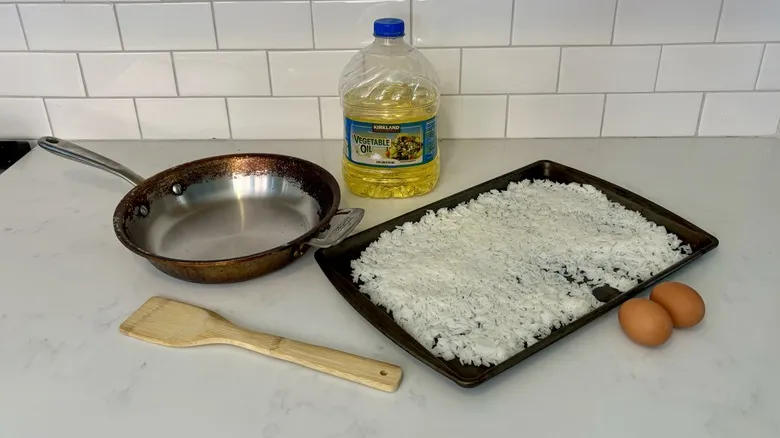
Along with day-old rice, you'll require a neutral cooking oil like safflower, canola, or vegetable oil. This will help prevent sticking and has a relatively high smoke point, which helps avoid burning the oil. You'll also need a wok or a heavy-bottomed pot or pan. These can be non-stick or traditional, but it's important to choose something that retains and distributes heat effectively. A Dutch oven is a great option for this. Additionally, a large spatula will be necessary for mixing in your pan. Don't forget to have bowls ready for any extra ingredients and mix-ins you plan to use.
Lastly, gather any ingredients and mix-ins you enjoy, such as proteins, vegetables, herbs, or finishing oils—whatever suits your taste.
Helpful hints
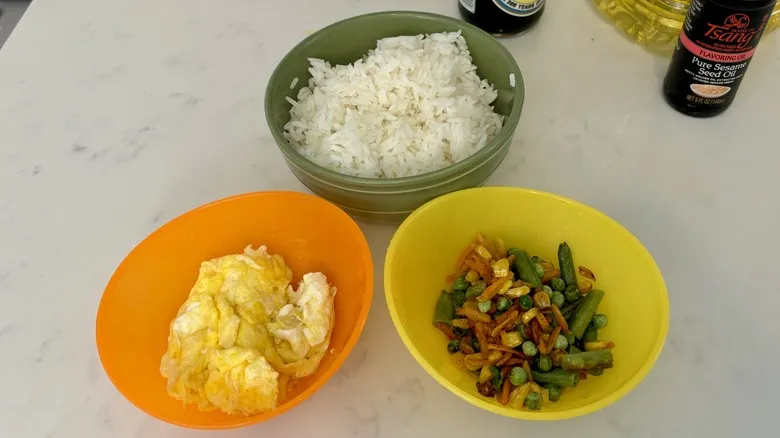
When preparing fried rice, keep three key points in mind. First, cook at a high temperature for a brief period. Fried rice is not meant to be a slow-cooked dish. Ensure your pan is fully heated to prevent the rice from sticking, allowing it to toss and crisp up beautifully.
Second, avoid overcrowding your pan. The ingredients should only form a thin layer across the surface. This ensures that everything cooks quickly and evenly, preventing any soft or undercooked spots.
Lastly, we will cook the mix-ins separately. This method ensures that each ingredient is cooked to perfection without risking overcooking or undercooking any part of your fried rice.
Heat up the pan

Preheat your pan to a medium temperature. It's crucial not to overlook this step, as skipping it can lead to food sticking and disappointment. Allow your pan sufficient time to reach the right heat level, which may take up to 10 minutes depending on the material of the pan.
Add your oil

Pour your initial amount of oil into the pan, ensuring there's enough to keep food from sticking.
Cook your additional ingredients
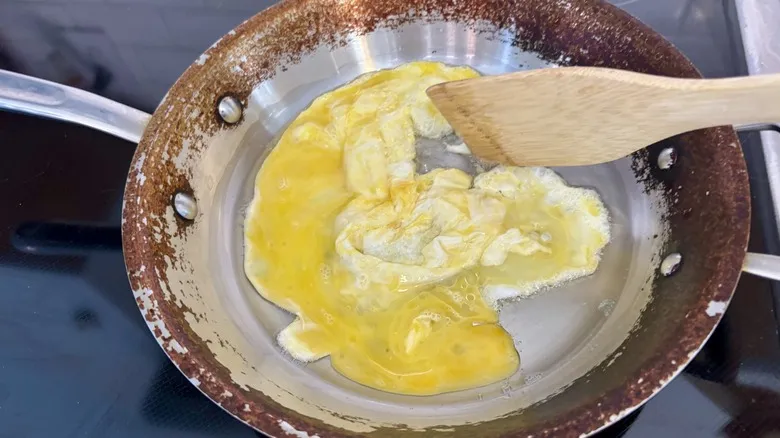
If you're using them, crack your eggs into the pan and fry until fully cooked. Transfer them to a bowl and set aside. Repeat this process for each type of protein and vegetable individually, adding oil between each batch. It may seem like a lot of steps, but each ingredient will cook quickly.
Prepare for the rice
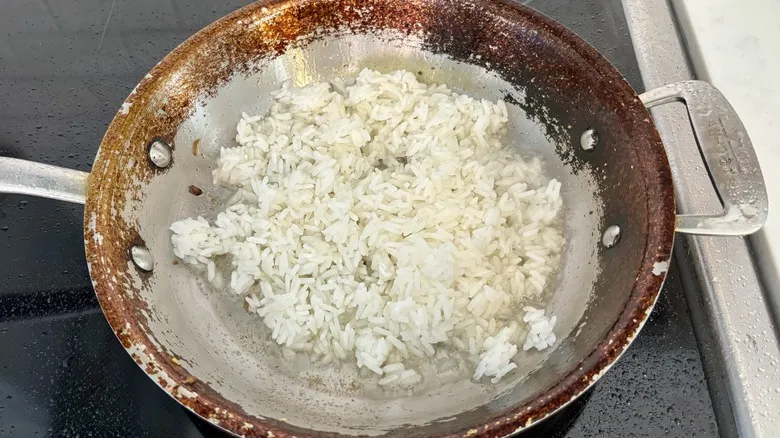
Next, increase the heat to medium-high. It's important for the pan to be hot to achieve a nice crispy texture on the rice. After that, pour in some more oil, being generous with the quantity. Now, you can add the rice to the pan.
Cook your rice
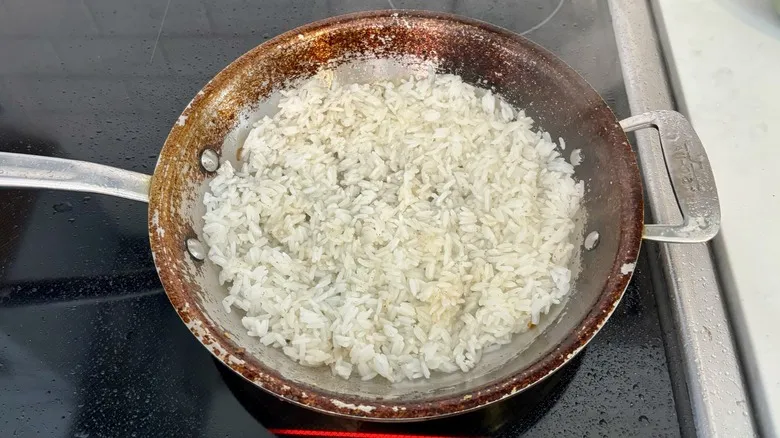
Let the rice start to crisp up before stirring. Use an upward motion to lift the rice from the pan and return it. Avoid creating tall mounds of rice; instead, utilize the entire bottom surface of the pan to ensure even cooking. A great technique is to spread the rice out to cover all the space in the pan, allowing it to crisp before flipping. Listen for the snap, crackle, and pop—this isn't just a catchy breakfast slogan, but a reliable indicator that your rice is cooking well.
Add the finishing touches
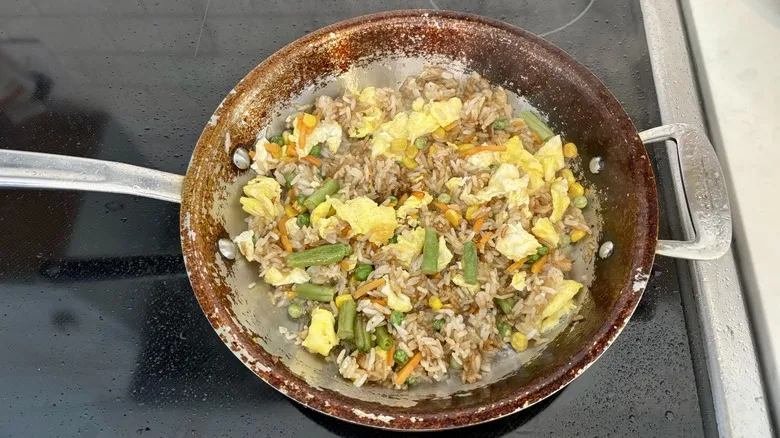
When your rice reaches a lovely golden brown and becomes crispy, incorporate your mix-ins and stir well. Add any final flavor enhancements or garnishes, then transfer the mixture to a serving bowl.
How long will it last
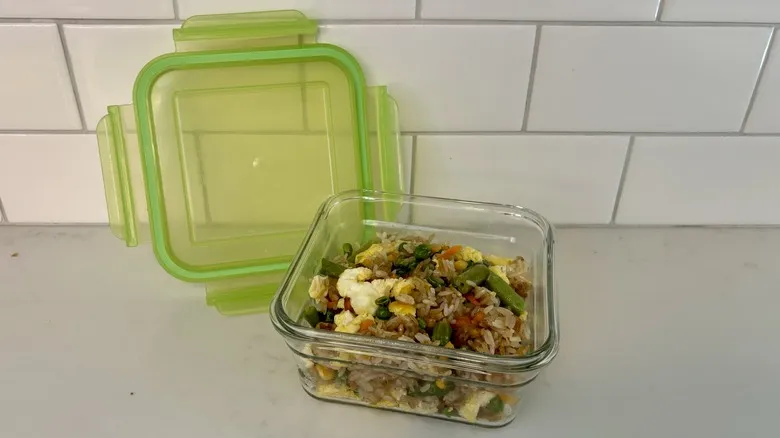
Once your rice is perfectly cooked and has achieved a lovely golden brown color, return all your ingredients to the pot and give it a quick stir. Incorporate any extra seasonings or finishing touches, then remove from heat, plate it up, and serve.
Fried rice recipes/ingredients to add
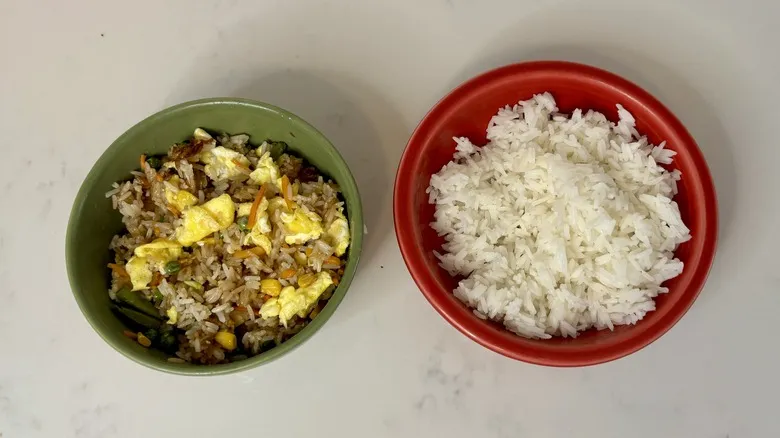
As you create your unique fried rice recipe, we suggest incorporating a few key ingredients. While soy sauce is a staple, consider using mirin, a rice wine that imparts a delicate sweetness and savory depth to your meals. Fish sauce is another excellent addition, bringing a rich, salty complexity to the dish. And let's not forget bacon—using it as your protein will add a delightful, crispy, and salty element that’s hard to resist.
Recommended

How To Clean A Glass Stove Top (Without Leaving A Single Scratch)
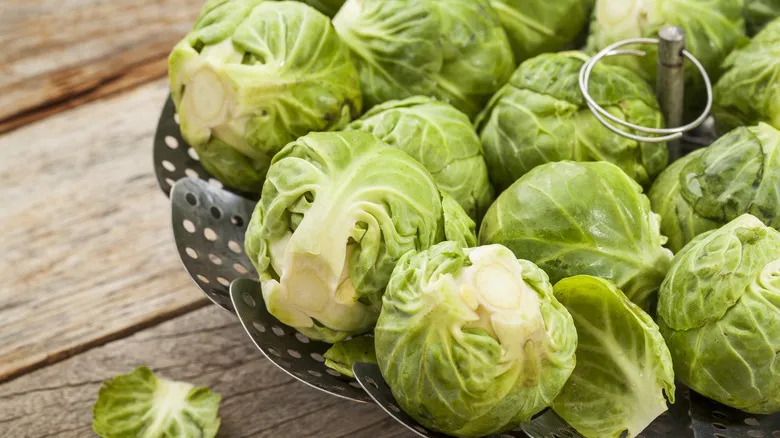
You Don't Need A Dedicated Steamer Pot. Here's What To Use Instead

How To Make Fool-Proof Nachos For Any Game Day
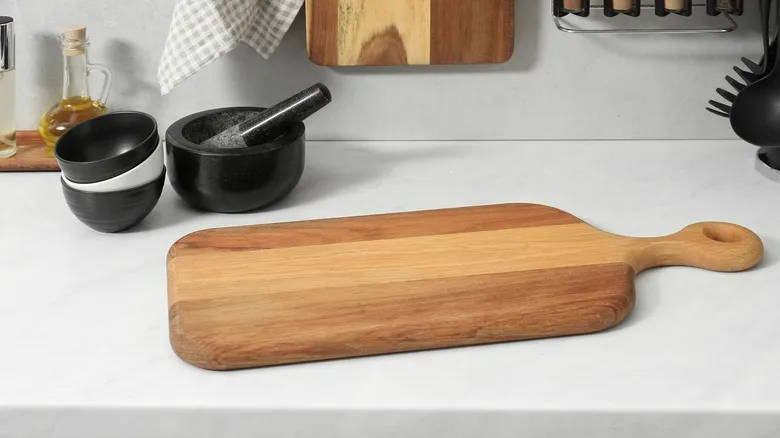
How To Clean A Wooden Cutting Board So It Doesn't Warp
Next up

